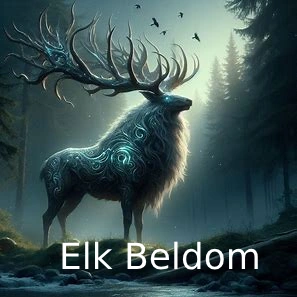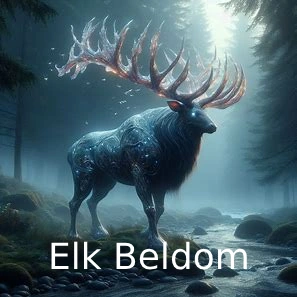Elk Bledom is a fascinating creature that has attracted the attention of wildlife enthusiasts, biologists, and nature lovers alike. Despite the name, it is not a hybrid animal, but rather a specific species that plays a vital role in the ecosystem. In this article, we will delve into the characteristics, importance, and conservation efforts for Elk Bledom.
Understanding the Elk Bledom
Definition of Elk Bledom
The Elk Bledom is a type of large herbivorous mammal found primarily in North America. It is known for its impressive size and unique antlers. The Elk Bledom belongs to the Cervidae family, which also includes deer and moose. This animal is known for its striking appearance and key role in the ecosystem.
The Importance of Elk Bledom in Nature
Elk Bledoms are not just majestic creatures but also serve essential functions in the natural world. They help maintain the balance of plant populations by grazing on shrubs and grasses. In turn, they become an important food source for predators like wolves and bears.
Where Can You Find Elk Bledom?
Common Habitats for Elk Bledom
Elk Bledoms are commonly found in forested areas, grasslands, and mountain meadows. They thrive in environments where there is a rich supply of vegetation, such as the Rocky Mountains, Great Plains, and even parts of Canada.
Geographic Distribution of Elk Bledom
Elk Bledoms are primarily located in North America, with populations in the United States and Canada. They are often found in national parks and protected wildlife reserves. Their numbers have been growing due to conservation efforts that protect their natural habitats.

Characteristics of Elk Bledom
Physical Traits
Elk Bledoms are large animals, with males reaching up to 8 feet in length and weighing between 700 to 1,100 pounds. They have a distinctive coat, typically a reddish-brown color in summer and a grayish-brown hue during winter. One of their most notable features is their large, branching antlers, which are shed and regrown annually.
Behavior and Lifestyle
Elk Bledoms are social animals and often form herds for protection and companionship. They are most active at dawn and dusk and tend to migrate based on the seasons, searching for food and shelter. Their calls, known as bugling, are often heard during mating season.
Why Elk Bledom Matters
Ecological Importance
Elk Bledoms play a significant role in maintaining the health of their ecosystems. By grazing on vegetation, they help prevent the overgrowth of certain plants, which can otherwise block sunlight and damage the habitat. This keeps the ecosystem balanced and thriving.
Role in the Food Chain
As herbivores, Elk Bledoms provide food for carnivores like wolves, mountain lions, and bears. They are also an important prey species for birds of prey such as eagles. Their existence helps maintain the delicate balance of predator and prey.
How to Spot an Elk Bledom
Identifying Features
To identify an Elk Bledom, look for its large size and antlers. Males typically have much larger antlers compared to females. Their fur is typically reddish-brown in the summer, which fades to a grayish-brown in winter.
Common Mistakes When Identifying Elk Bledom
Many people mistake the Elk Bledom for other similar-looking species, like deer or moose. However, the Elk Bledom is typically larger than most deer species and has a more distinct, branched antler system. The elk’s size and the shape of their antlers set them apart from others.
Elk Bledom in the Wild: Interesting Facts
Fun Facts About Elk Bledom
- Bugling: During the mating season, male Elk Bledoms produce a loud, high-pitched bugling sound to attract females and warn other males.
- Size: Elk Bledoms can run at speeds of up to 45 miles per hour when threatened by predators.
- Lifespan: In the wild, Elk Bledoms can live up to 10-13 years, though their lives are often shorter due to predation.
Misconceptions About Elk Bledom
Some people believe that Elk Bledoms are a danger to humans due to their size and antlers. However, they are usually quite timid and will flee if they sense danger. They generally only pose a threat if they feel cornered or threatened.
If you want to read more about pets, visit our Website’s Pet Section.
Elk Bledom Conservation Efforts
Why Conservation Matters
As populations of Elk Bledom face threats from habitat loss, hunting, and climate change, conservation efforts have become crucial. Protecting these animals not only helps preserve their species but also ensures the balance of the ecosystems they are a part of.
Organizations Working for Elk Bledom
Various organizations, such as the Wildlife Conservation Society (WCS) and National Park Service (NPS), have dedicated efforts to the protection of Elk Bledoms through habitat preservation, anti-poaching laws, and public education campaigns.
For more details on the importance of conservation and how you can help, visit Wildlife Conservation Society.
Elk Bledom and Human Interaction
Relationship Between Humans and Elk Bledom
Humans have interacted with Elk Bledoms for centuries, whether through hunting or observation. In some areas, Elk Bledoms have become a symbol of wilderness and are an important part of the tourism industry. However, it is essential to respect their habitats and avoid disrupting their natural way of life.
How We Can Protect Elk Bledom
To protect Elk Bledoms, we must avoid encroaching on their natural habitats and help maintain the health of the ecosystems where they live. This includes supporting conservation efforts, reducing deforestation, and promoting responsible tourism.

FAQs About Elk Bledom
- Where are Elk Bledoms found?
- Elk Bledoms are found in North America, particularly in the United States and Canada.
- What do Elk Bledoms eat?
- Elk Bledoms are herbivores, feeding on grasses, shrubs, and tree bark.
- How big are Elk Bledoms?
- Male Elk Bledoms can weigh between 700 to 1,100 pounds and measure up to 8 feet long.
- Are Elk Bledoms dangerous?
- While large, Elk Bledoms are generally not aggressive toward humans unless threatened.
- What is the lifespan of an Elk Bledom?
- They typically live between 10 to 13 years in the wild.
Final Words
Elk Bledoms are an essential part of our natural world, providing ecological balance and helping maintain the health of their habitats. Through conservation efforts and a deeper understanding of their role in nature, we can ensure that these majestic creatures continue to thrive for generations to come. If you ever encounter an Elk Bledom, remember to respect their space and enjoy the awe-inspiring beauty of the wild.
By learning more about Elk Bledoms and their importance, we can contribute to a future where these magnificent animals are protected and preserved.




